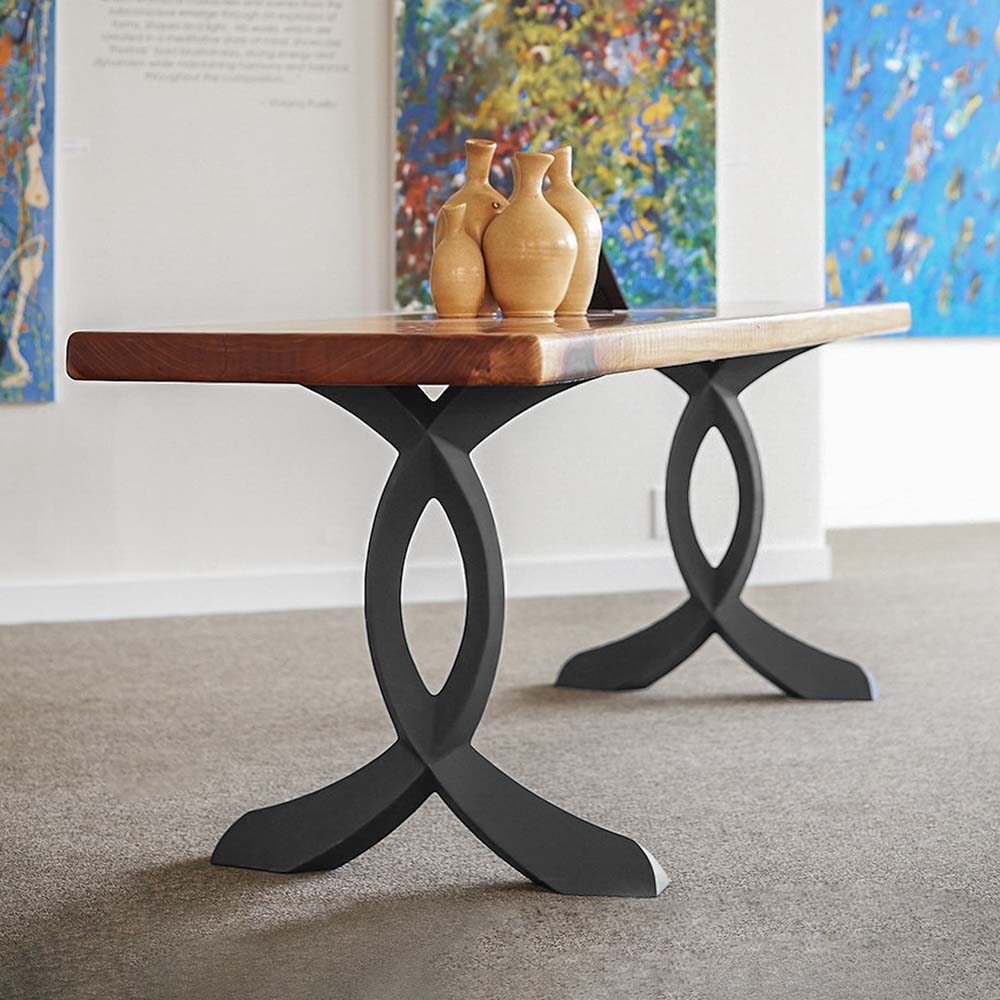Discover the Best Materials for Dining Room Table Legs for every single Design
Discover the Best Materials for Dining Room Table Legs for every single Design
Blog Article
An In-depth Look at Dining Table Leg Styles: Finding the Suitable Match
Selecting the appropriate table leg style is vital for both visual appeal and practical capability. Standard four legs supply ageless beauty and stability, while the stand base offers increased legroom and a modern-day look. For those with larger tables, trestle legs make sure durable assistance, whereas hairpin legs present a mid-century contemporary vibe with their minimal design. The x-shaped legs mix contemporary design with enhanced security. Each of these options brings unique advantages, making the choice a lot more than just an issue of preference. Explore further to find which design perfectly matches your eating area and way of life.
Typical Four Legs
Among the various kinds of eating table leg designs, the traditional four-leg layout continues to be a classic selection for lots of families. 4 legs provide well balanced assistance, making sure the table stays stable and capable of bearing considerable weight (dining room table legs).
From an aesthetic perspective, the traditional four-leg layout can be conveniently adapted to various indoor designs. Whether crafted from wood, metal, or a mix of materials, these legs can be intricately carved, sleek and minimalistic, or anything in between. Their flexibility allows them to complement both rustic and modern setups flawlessly.
Furthermore, the straightforward framework of the four-leg style helps with simplicity of motion and placement within an area. Unlike more complex bases, this design reduces blockages, offering ample legroom for restaurants. In summary, the typical four-leg table leg design marries sustaining sophistication with useful capability, making it an astute selection for those seeking both kind and feature in their dining furnishings.
Pedestal Base
Usually celebrated for its classy and space-efficient style, the pedestal base is a notable choice to the typical four-leg arrangement in table leg styles. This unique base typically includes a solitary central column sustaining the table top, which can differ in form, from ornately carved timber to sleek, contemporary steel. One of the main benefits of the pedestal base is its capability to make the most of legroom and seating adaptability. Without edge legs, diners are paid for better freedom of motion, making it an excellent choice for round and oval tables that promote more intimate and inclusive celebrations.
Additionally, the stand base's main assistance can deal with considerable weight, enabling for the usage of much heavier table tops, such as marble or thick wood. This stamina paired with its aesthetic flexibility makes the pedestal base a popular choice in both typical and contemporary indoor setups. It can seamlessly incorporate with numerous layout motifs, from traditional sophistication to minimal modernity. The central column itself offers a canvas for detailed styles and imaginative expressions, adding an element of aesthetic passion underneath the table. In summary, the stand base integrates performance snappy, making it an improved and functional choice for diverse dining environments.
Trestle Legs
Trestle legs give a durable and timeless structure for dining tables, identified by their horizontal cross-bracing and sturdy assistance beams. Stemming from medieval times, this style has progressed yet retained its crucial structure, making it a seasonal favorite in both standard and modern settings. The central trestle light beam, typically sustained by two or even more vertical posts, uses remarkable security, permitting larger table sizes without the need for extra legs.
A significant advantage of trestle leg tables is the enough legroom they offer. Unlike tables with four edge legs, the lack of obstructions at the table's sides gives unimpeded area for chairs and restaurants, enhancing comfort and ease of access. This makes trestle tables optimal for suiting larger events, whether in Homepage a dining-room or a banquet hall.
The visual versatility of trestle legs is notable. Readily available in a variety of materials such as wood, metal, and composite, they can be finished to match a variety of indoor styles. From rustic farmhouse to sleek contemporary styles, trestle legs can be tailored to match specific preferences. Their long-lasting appeal and functional benefits make trestle legs an engaging choice for those seeking both style and practicality in their table.
Hairpin Legs

The appeal of hairpin legs lies in their simplicity and versatility - dining room table legs. Readily available in a series of materials, consisting of steel and brass, they can be completed in countless shades to complement various indoor designs. Whether coupled with a rustic wood table top or a contemporary glass surface, hairpin legs easily mix capability with a touch of click over here now vintage beauty
Sturdiness is an additional remarkable feature of hairpin legs. In spite of their fragile look, these legs are engineered to birth significant weight, making certain the dining table remains stable and protected. Furthermore, they are relatively easy to install, making them a prominent option for DIY lovers and expert furnishings makers alike.
X-Shaped Legs

Built from products such as steel, timber, or a mix of both, X-shaped legs can be customized to match numerous design preferences. Steel legs usually lend a smooth and industrial feel, perfect for loft-style houses and contemporary eating areas.
In addition, the design behind X-shaped legs makes certain also weight distribution, lessening the threat of tottering and boosting durability. This makes them particularly well-suited for larger table that call for additional support. Basically, X-shaped legs mix practical design with modern-day aesthetics, making them an ageless option for diverse dining environments.
Final Thought
An extensive understanding of dining table leg styles exposes the unique characteristics and advantages of each design. Conventional four legs supply stability and timeless allure, while stand bases supply legroom and a streamlined appearance. Trestle legs ensure robust support for bigger tables, and barrette legs introduce a mid-century modern visual. X-shaped legs incorporate contemporary design with enhanced security. Selecting the ideal leg style ensures both useful and visual contentment in any type of dining room.
Report this page